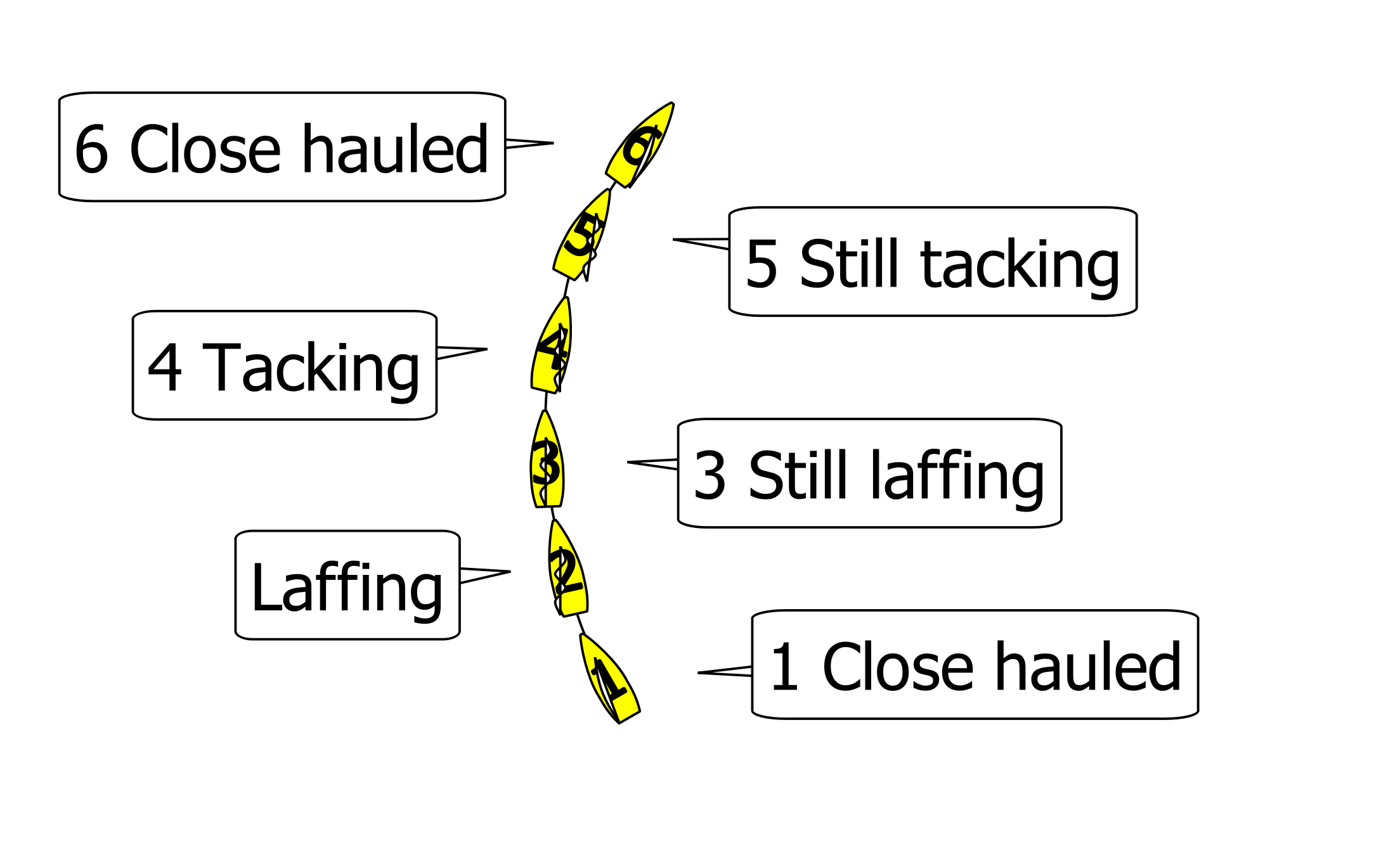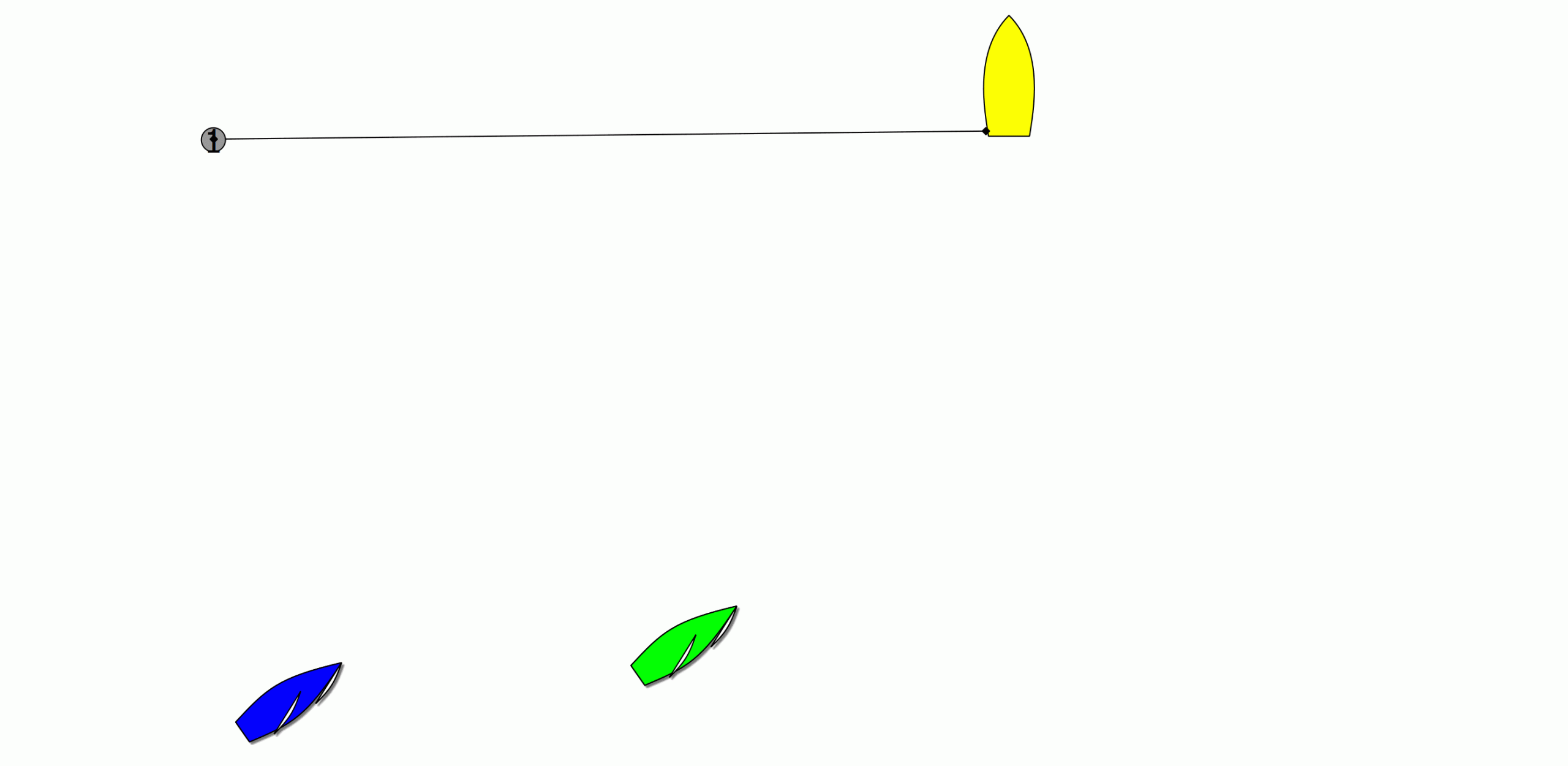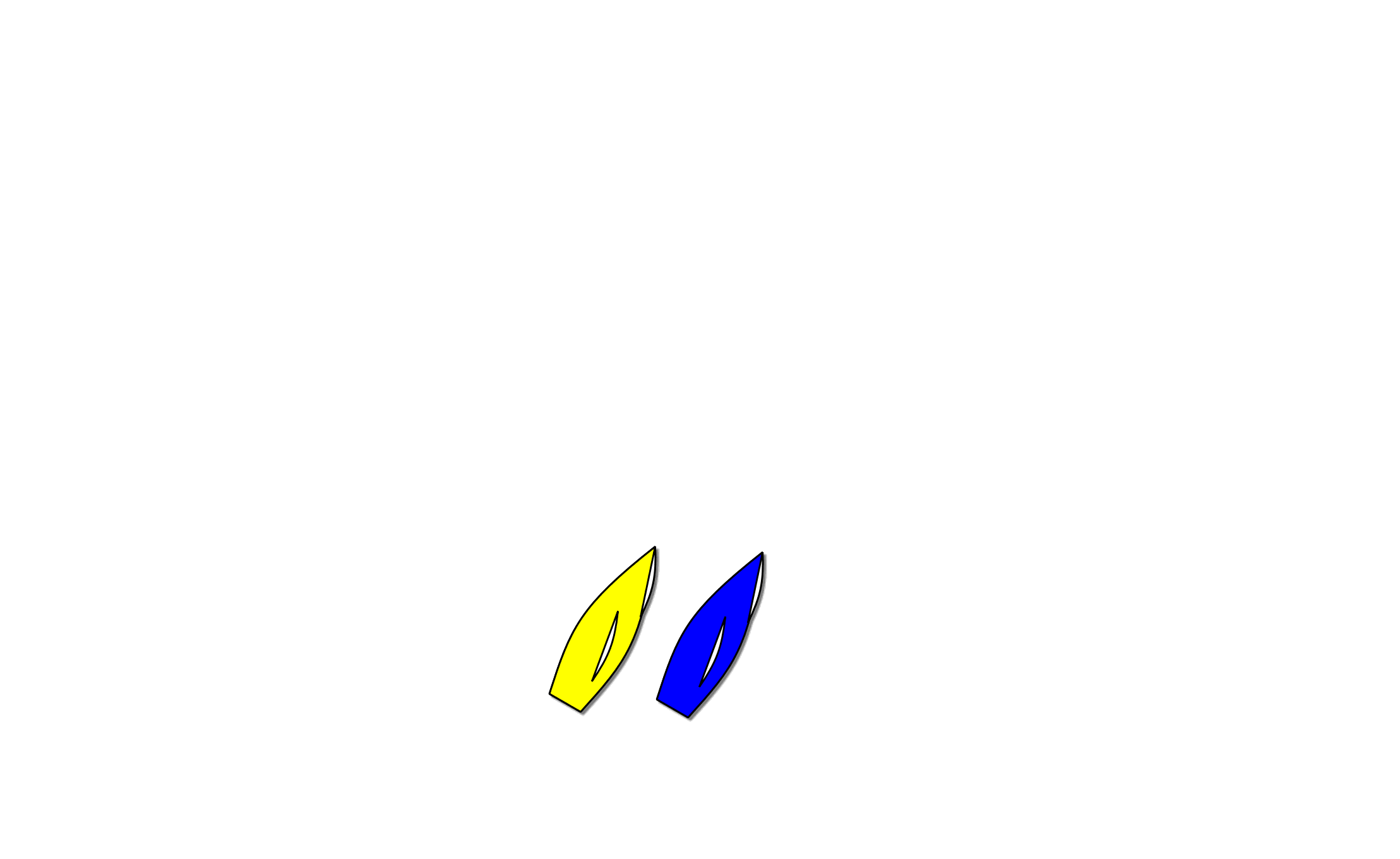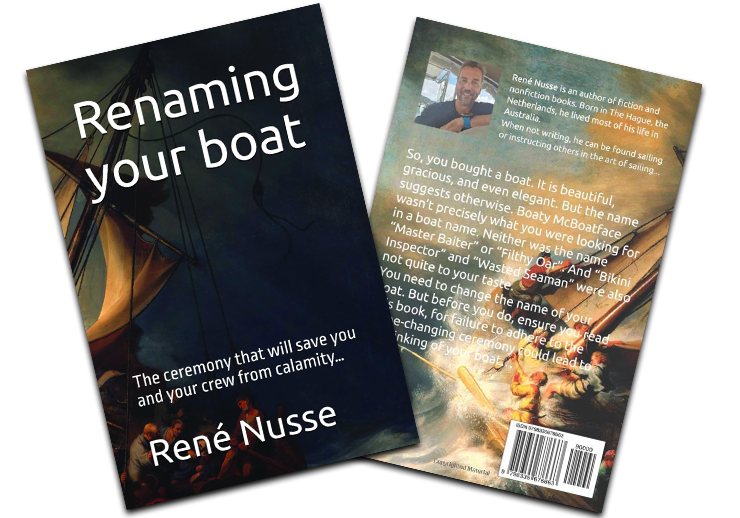Let’s look at what Rule 13 says:
WHILE TACKING
After a boat passes head to wind, she shall keep clear of other boats until she is on a close-hauled course. During that time rules 10, 11 and 12 do not apply. If two boats are subject to this rule at the same time, the one on the other’s port side or the one astern shall keep clear.
The most common mistake with Rule 13 is misinterpreting the title “Whilst tacking”. A lot of sailors think that tacking is that time where the boat changes from one tack to another when sailing into the wind. This is not correct as this time has two very separate phases.
The first phase starts when a boat sails close-hauled and starts to turn into the wind resulting in the sail(s) to luff. Luffing continues up to the point where the boat passes head to wind. In the context of Rule 13, from that point onwards until you reach close-hauled again is “tacking”.

Tacking
Another often misunderstood element of Rule 13 is the term “on a close-hauled course”. This has nothing to do with the position of the sail(s). So a boat can reach her close-hauled course and still have sails flapping about. In other words, it has more to do with direction and bearing than sail position. We find this happening most frequently at the start of a race.

Close-hauled course
The last important element of Rule 13 is “keep clear” which we can also find in the definitions…
A boat keeps clear of a right-of-way boat
(a) if the right-of-way boat can sail her course with no need to take avoiding action and,
(b) when the boats are overlapped, if the right-of-way boat can also change course in both directions without immediately making contact.
We covered the application of “keep clear” in previous rules and with Rule 13 there is no difference in application.
The last part of Rule 13 states that “If two boats are subject to this rule at the same time, the one on the other’s port side or the one astern shall keep clear. We see this in the example below where yellow and blue are on the same tack and overlapped.
Yellow keeps clear of blue when both boats start to tack. At position 3, both boats protest each other. Yellow argues that blue is now the windward boat and therefore breaks Rule 11 (windward/leeward). Blue argues that yellow is still tacking and that yellow broke Rule 13. Blue is right and yellow should take 2 penalty turns.
Remember, if Rule 13 applies to both boats, “when you are on the right – you are in the right”.

Blue not keeping clear
So to sum up Rule 13…
- Common “must-know” rule particularly at the start of a race.
- It applies to boats that are tacking.
- Understand the difference between luffing and tacking.
- Understand that “close-hauled course” is directional and not the position of your sails.
- When Rule 13 applies, Rules 10, 11 and 12 do not.
- When both boats are involved, “on the right – in the right”.



